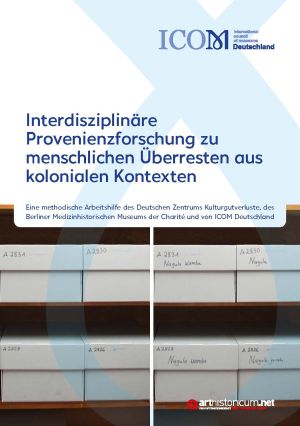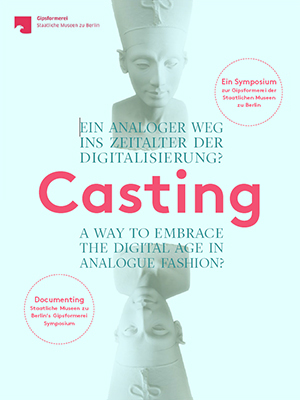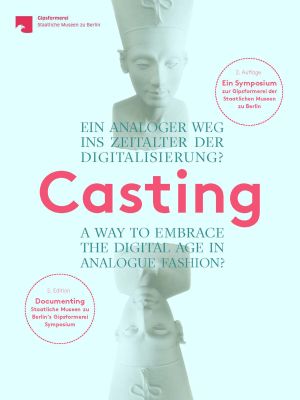Berner, Margit
Interdisziplinäre Provenienzforschung zu menschlichen Überresten aus kolonialen Kontexten: Eine methodische Arbeitshilfe des Deutschen Zentrums Kulturgutverluste, des Berliner Medizinhistorischen Museums der Charité und von ICOM Deutschland
The guidelines offer a practical introduction into provenance research on human remains from colonial contexts. Though focussed on German institutions, they also give a glance at the situation in Austria. They apply to collections of human remains kept in universities and museums, mostly in the fields of anthropology, anatomy and medical history. The interdisciplinary approach combines several research methods. The guidelines provide extensive guidance for historical, anthropological and natural sciences methods of provenance research. They also explain the cross-cultural and transnational dimensions of provenance research and discuss how to document the results of the research.
Casting. A way to embrace the digital age in analogue fashion? A symposium on the Gipsformerei of the Staatlichen Museen zu Berlin
The Gipsformerei, the oldest establishment of the Staatlichen Museen zu Berlin still active today, will be celebrating its 200th anniversary in a few years time. The Gipsformerei’s forthcoming anniversary is a welcome opportunity for us to address the following question: How can an institution whose core activity lies in traditional handcrafted production hold its own in the face of technical innovation? The publication addresses that question and adds an interesting cross-section on the current research debate. Besides all the papers presented at the symposium the panel discussion and the final discussion are summarized in English and German at the end of the production.
View this volume as interaktive version direktly in the browser.
2. revised edition: https://doi.org/10.11588/arthistoricum.536
Casting. A way to embrace the digital age in analogue fashion? A symposium on the Gipsformerei of the Staatlichen Museen zu Berlin
2. revised edition
The Gipsformerei, the oldest establishment of the Staatlichen Museen zu Berlin still active today, will be celebrating its 200th anniversary in a few years time. The Gipsformerei’s forthcoming anniversary is a welcome opportunity for us to address the following question: How can an institution whose core activity lies in traditional handcrafted production hold its own in the face of technical innovation? The publication addresses that question and adds an interesting cross-section on the current research debate. Besides all the papers presented at the symposium the panel discussion and the final discussion are summarized in English and German at the end of the production.









